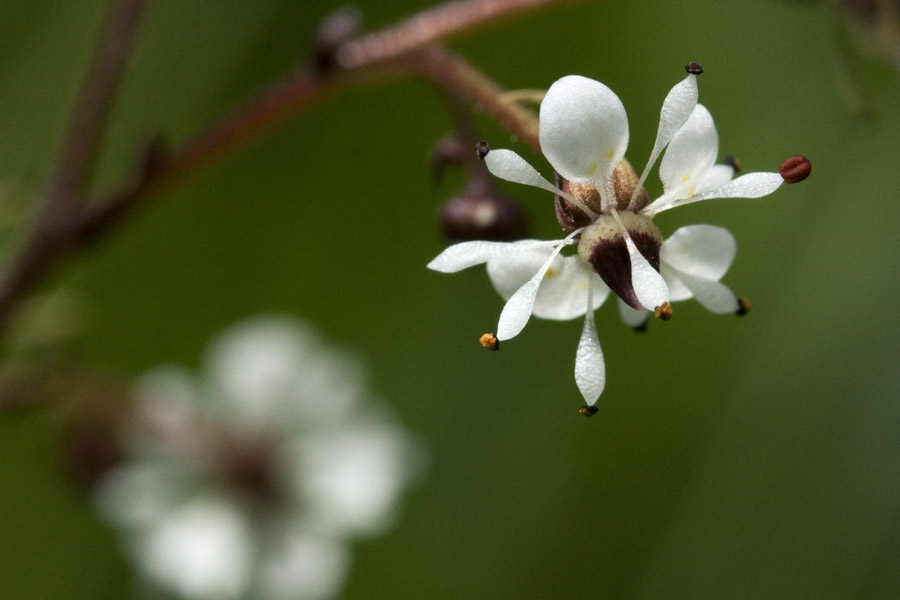Micranthes
|
Family: Saxifragaceae |
Herbs, sometimes rhizomatous, sometimes stoloniferous; herbage usually hairy, sometimes stipitate-glandular, sometimes glabrous; caudex or rhizome scaly, sometimes with bulbils. Flowering stems ± erect, leafless, 2-125 cm. Leaves basal, (proximally cauline and crowded in M. tolmiei); stipules absent; petiole present (absent in M. bryophora, M. tolmiei; ± absent in M. foliolosa, M. stellaris; appearing absent in M. tempestiva); blade obtrullate, spatulate, fan-shaped, or obovate to oblanceolate, linear to oblong, elliptic or rhombic, to lanceolate, ovate, triangular, deltate, round, or reniform, lobed or unlobed, base attenuate or cuneate to truncate or cordate, ultimate margins entire, crenate, serrate, or dentate, (without lime-secreting hydathodes), apex acute to obtuse or rounded; venation pinnate or palmate. Inflorescences cymes or thyrses, sometimes solitary flowers, from terminal buds in rosettes, 2-70+[-1000]-flowered, (flowers sometimes replaced by bulbils in M. bryophora, M. ferruginea, M. foliolosa, M. petiolaris, M. stellaris), (scapose), bracteate; (bracts reduced or sometimes leaflike, only proximal in M. tolmiei). Flowers radially symmetric (± bilaterally symmetric in M. ferruginea, M. petiolaris); hypanthium free from or 1/4-3/4 adnate to ovary, free to 0.5 mm, usually green, rarely purplish; sepals 5, green, sometimes reddish at tips; petals 5 (absent or 1-5 in M. apetala, M. subapetala), usually white or cream, sometimes greenish, yellowish, pinkish, pink, purplish, purple, or reddish purple, sometimes purple-margined, sometimes orange-, yellowish green-, or yellow-spotted; nectary disc present or not; stamens 10, (distinct); filaments linear and ± flattened or club-shaped; pistils 2(-3+), 2(-3)-carpellate, carpels distinct or connate to ca. 1/2 their lengths (rarely more); ovary superior or ± inferior, sometimes appearing more superior in fruit, 2(-3)-locular; placentation axile (when connate); styles 2(-3); stigmas 2-3. Capsules folliclelike or 2(-3)-beaked. Seeds brown, oblong, ellipsoid, or ovoid, longitudinally ribbed (ribs ribbonlike or pectinate). x = 8. The ovules of Micranthes species are unitegminate, except those of M. merkii and M. tolmiei (sect. Merkianae), which are bitegminate. Pollen exine is reticulate. These characters help distinguish Micranthes from Saxifraga (see discussion for differences among the genera). Some circumboreal species (e.g., Micranthes nelsoniana), which show only slight variation in Europe (D. A. Webb and R. J. Gornall 1989), are more variable in North America.
|

